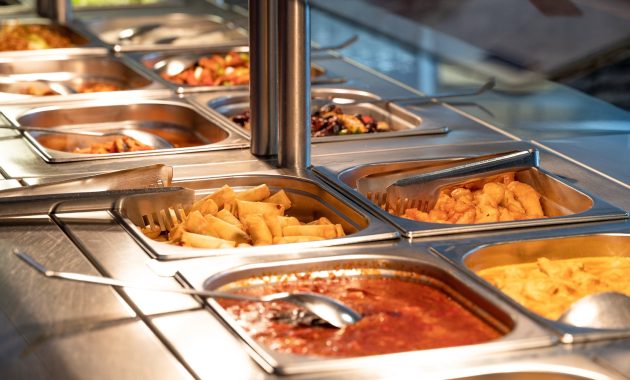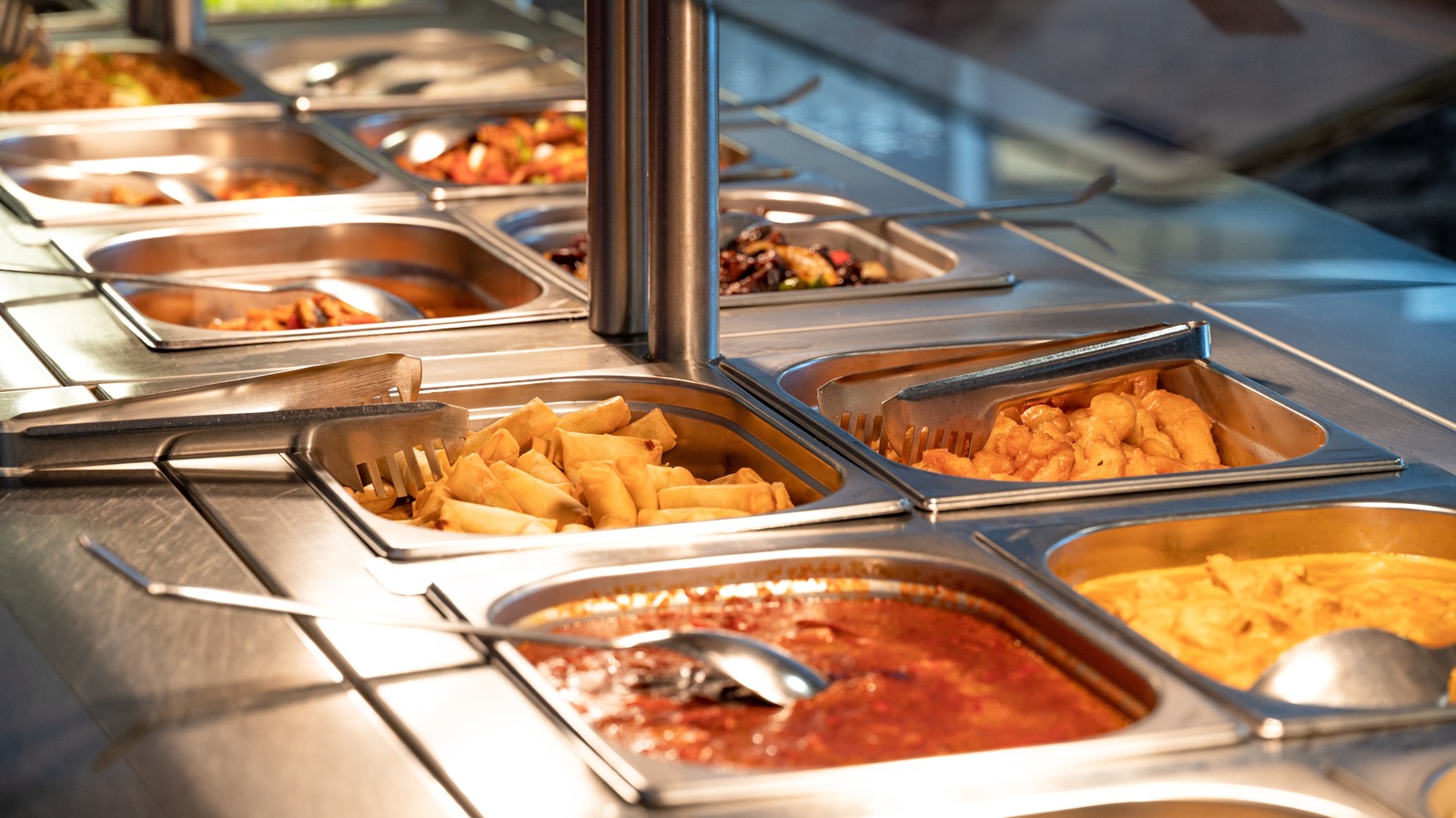
How to Eat at a Buffet Without Diabetic Setbacks: A Guide to Smart Choices
The allure of a buffet is undeniable. A vast array of culinary options, promising an all-you-can-eat experience, can be tempting. For individuals managing diabetes, navigating this landscape requires careful consideration. The abundance of food, often high in carbohydrates and sugars, can pose significant challenges. This article provides a comprehensive guide on how to eat at a buffet without diabetic setbacks, empowering individuals to make informed choices and enjoy their dining experience safely.
This isn’t about deprivation; it’s about strategic planning. By understanding the impact of different foods on blood sugar levels and employing smart strategies, individuals with diabetes can savor the buffet experience without compromising their health. We’ll explore practical tips, food selection strategies, and essential considerations for a successful buffet outing. The goal is to provide a framework for making informed decisions and enjoying a satisfying meal while prioritizing blood sugar management.
Understanding the Impact of Food on Blood Sugar
Before diving into buffet-specific strategies, it’s crucial to understand the fundamental relationship between food and blood sugar. The body breaks down carbohydrates into glucose, which is then absorbed into the bloodstream. This process causes blood sugar levels to rise. For individuals with diabetes, the body either doesn’t produce enough insulin (Type 1) or can’t effectively use the insulin it produces (Type 2). Insulin is a hormone that helps glucose enter cells for energy. Without sufficient insulin, glucose builds up in the bloodstream, leading to hyperglycemia (high blood sugar).
Different foods affect blood sugar levels differently. The glycemic index (GI) and glycemic load (GL) are helpful tools for understanding these effects. The GI ranks carbohydrates on a scale of 0 to 100 based on how quickly they raise blood sugar. The GL takes into account the GI and the amount of carbohydrate in a serving. Generally, foods with a low GI and GL are preferred for individuals with diabetes. However, portion control is also crucial regardless of the GI/GL values.
Understanding the carbohydrate content of foods is equally important. Carbohydrates have the most significant impact on blood sugar levels. Protein and fats have a lesser impact. However, consuming large amounts of fat can lead to insulin resistance over time. This knowledge forms the foundation for making informed choices at the buffet.
Pre-Buffet Planning: Setting Yourself Up for Success
Preparation is key when it comes to how to eat at a buffet without diabetic setbacks. Planning ahead can significantly improve your chances of success. Here are some essential pre-buffet strategies:
- Check the Menu (If Available): If the buffet’s menu is available online or through other means, review it beforehand. This allows you to anticipate potential food choices and identify options that align with your dietary needs.
- Plan Your Meal: Think about what you want to eat before you arrive. Identify foods that are lower in carbohydrates and prioritize those. This can prevent impulsive choices.
- Eat a Small, Balanced Snack Beforehand: Don’t arrive at the buffet ravenous. Eating a small, balanced snack, such as a handful of nuts or a small protein shake, can help curb overeating. This snack should contain protein, fiber, and a small amount of healthy fats.
- Hydrate: Drink plenty of water before, during, and after your meal. Water helps with digestion and can also help you feel fuller.
- Check Blood Sugar: Before you go, check your blood sugar levels. This will provide a baseline to compare with after your meal.
- Consider Insulin Dosing (If Applicable): If you take insulin, discuss your meal plan with your doctor or a certified diabetes educator. They can help you adjust your insulin dosage based on the anticipated carbohydrate intake.
Navigating the Buffet: Smart Food Choices
Once you arrive at the buffet, strategic food selection is critical for managing blood sugar. Here are some guidelines for making smart choices when considering how to eat at a buffet without diabetic setbacks:
- Start with Non-Starchy Vegetables: Fill your plate with non-starchy vegetables like leafy greens, broccoli, and peppers. These are low in carbohydrates and high in fiber, which can help slow down the absorption of glucose.
- Choose Lean Protein: Prioritize lean protein sources such as grilled chicken, fish, or lean cuts of meat. Protein helps keep you feeling full and has a minimal impact on blood sugar.
- Select Healthy Fats: Include healthy fats in your meal, such as those found in avocados, nuts, or olive oil-based dressings. Healthy fats can help you feel satisfied.
- Limit Starchy Carbohydrates: Be mindful of starchy carbohydrates like pasta, rice, potatoes, and bread. Choose smaller portions and consider the GI and GL of these foods. Opt for whole-grain options when available.
- Be Cautious with Fried Foods: Fried foods are often high in fat and can contribute to weight gain. They can also slow down digestion and make it difficult to manage blood sugar.
- Watch Out for Sauces and Dressings: Sauces and dressings can be high in sugar and hidden carbohydrates. Choose light options or use them sparingly.
- Practice Portion Control: Use a smaller plate to control portion sizes. Avoid going back for seconds, especially with high-carbohydrate foods.
- Choose Fruit in Moderation: While fruit is healthy, it contains natural sugars. Choose smaller portions and combine them with protein or healthy fats.
- Be Mindful of Desserts: Desserts are often high in sugar and carbohydrates. If you choose to have dessert, opt for smaller portions and consider sharing with someone.
- Read Labels: If labels are available, read them to understand the nutritional content of the food.
Buffet Strategies: Tips for Success
Beyond food choices, several strategies can help you navigate the buffet successfully and understand how to eat at a buffet without diabetic setbacks:
- Survey the Buffet Before Filling Your Plate: Before you start, walk around the entire buffet to assess your options. This allows you to make a more informed decision.
- Eat Slowly: Eating slowly allows your body time to signal fullness. This can help prevent overeating.
- Stay Away From the Bread Basket: Resist the temptation to start with bread. It’s often high in carbohydrates.
- Drink Water Throughout the Meal: Drinking water can help you feel fuller and stay hydrated.
- Take Breaks: Take breaks between courses to allow your body to digest. This can help you avoid overeating.
- Listen to Your Body: Pay attention to your body’s hunger and fullness cues. Stop eating when you feel satisfied, not stuffed.
- Avoid Sugary Drinks: Choose water, unsweetened tea, or diet beverages instead of sugary drinks.
- Be Aware of Hidden Sugars: Be mindful of hidden sugars in sauces, dressings, and marinades.
- Don’t Feel Guilty: It’s okay to indulge occasionally. The key is to make informed choices and practice moderation.
- Check Blood Sugar After the Meal: Monitor your blood sugar levels 1-2 hours after your meal to see how different foods affect you.
Post-Buffet Actions: Managing Blood Sugar After the Meal
After enjoying your buffet meal, taking certain actions can help manage your blood sugar levels. This is a continuation of understanding how to eat at a buffet without diabetic setbacks.
- Check Blood Sugar: Monitor your blood sugar levels 1-2 hours and 2-3 hours after your meal. This will help you understand how different foods affect your blood sugar.
- Adjust Insulin Dosage (If Applicable): If you take insulin, adjust your dosage as directed by your doctor or diabetes educator.
- Engage in Physical Activity: Physical activity can help lower blood sugar levels. Go for a walk or engage in other moderate exercise after your meal.
- Stay Hydrated: Continue to drink plenty of water to aid digestion and flush out excess glucose.
- Review Your Choices: Reflect on your food choices and identify areas for improvement. What worked well, and what could you do differently next time?
- Be Kind to Yourself: Don’t beat yourself up if your blood sugar is higher than usual. Learn from the experience and adjust your strategies for the next time.
Addressing Common Buffet Challenges
Buffets present unique challenges for individuals with diabetes. Here are some common issues and how to address them, further elaborating on how to eat at a buffet without diabetic setbacks:
- Overeating: Buffets encourage overeating. Use a smaller plate and practice portion control. Eat slowly and listen to your body’s fullness cues.
- High-Carbohydrate Foods: Buffets often feature high-carbohydrate foods. Choose smaller portions of starchy foods and prioritize non-starchy vegetables and lean protein.
- Hidden Sugars: Be aware of hidden sugars in sauces, dressings, and beverages. Opt for light options or use them sparingly.
- Lack of Nutritional Information: Buffets often lack detailed nutritional information. Read labels if available, and make informed choices based on your knowledge of food content.
- Social Pressure: Peer pressure can lead to overeating. Politely decline foods you don’t want and focus on making healthy choices.
Conclusion: Enjoying the Buffet Experience with Confidence
Navigating a buffet with diabetes requires planning, awareness, and strategic choices. By understanding the impact of food on blood sugar, making smart food selections, and employing practical strategies, individuals with diabetes can enjoy the buffet experience without compromising their health. Remember, it’s about making informed decisions, practicing moderation, and prioritizing your well-being. By following the guidelines outlined in this article, you can confidently answer the question of how to eat at a buffet without diabetic setbacks. Enjoy your meal, and prioritize your health!
[See also: The Best Foods for Diabetes Management]
[See also: Understanding the Glycemic Index and Glycemic Load]
[See also: Diabetes-Friendly Meal Planning]

